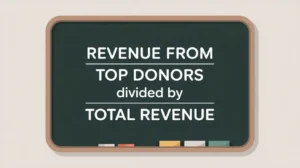Importance of Burn Rate (Program Spending Pace)
Burn rate shows how quickly a nonprofit is using available funds, providing insight into whether resources are being spent too fast, too slowly, or at the right pace. This matters because funding is often tied to timelines and deliverables, and misaligned spending can risk underperformance or overspending. For nonprofits in social innovation and international development, burn rate is particularly critical in grant management, where unspent funds may need to be returned or overspending can create deficits. Boards and donors rely on this measure to gauge financial health, operational discipline, and project alignment with funding cycles.
Definition and Features
Burn rate is defined as the rate at which a nonprofit spends its budgeted funds over a given period. Key features include:
- Formula: Total Funds Spent ÷ Total Time Elapsed (or remaining funds ÷ time left).
- Time Sensitivity: measured monthly, quarterly, or across grant periods.
- Forward Indicator: shows whether spending is aligned with implementation schedules.
- Risk Management: identifies risks of underspending (impact shortfalls) or overspending (cash flow gaps).
Burn rate differs from budget vs. actual reporting by focusing specifically on the pace of expenditure relative to time, rather than just variance from budget.
How This Works in Practice
In practice, nonprofits calculate burn rate to ensure grant and project funds are spent in alignment with agreed timelines. For example, a $1.2 million grant over 12 months implies an average monthly burn rate of $100,000. If only $300,000 has been spent by month six, the project is behind pace. Finance teams track burn rates monthly and share them with program managers to support corrective action. Donors often monitor burn rates to ensure funds are being utilized efficiently, with many requiring detailed explanations for significant underspending or overspending.
Implications for Social Innovation
For nonprofits in social innovation and international development, burn rate analysis strengthens accountability and planning. Transparent reporting reduces information asymmetry by showing stakeholders not just how much was spent, but whether funds are being deployed in line with commitments and capacity. Donors gain confidence when nonprofits can demonstrate disciplined financial pacing that aligns with program delivery. Internally, burn rate monitoring helps organizations adjust staffing, procurement, or activities to stay on track. By managing burn rates carefully, nonprofits can avoid financial risks, maximize impact, and strengthen trust with funders and communities alike.







